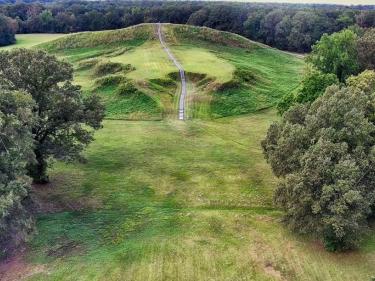
Poverty Point World Heritage Site
6859 Hwy. 577
Pioneer, LA 71266
United States
Open daily
- Open from 9 a.m. to 5 p.m.
- Closed Thanksgiving, Christmas & New Year's Day
- Groups are asked to call in advance
- $4 per person
- Free for senior citizens (62 and older)
- Free for children 3 and under
The time was eight centuries after Egyptian laborers dragged huge stones across the desert to build the Great Pyramids, and before the great Mayan pyramids were constructed. The place was a site in what is now northeastern Louisiana. The people were a sophisticated group who left behind one of the most important archaeological sites in North America.
The Poverty Point inhabitants set for themselves an enormous task as they built a complex array of earthen mounds and ridges overlooking the Mississippi River flood plain. This accomplishment is particularly impressive for a pre-agricultural society. The central construction consists of six rows of concentric ridges, parts of which were as high as five feet. The ridges form a semi-ellipse or C-shape, divided into sections by at least four aisles. The diameter of the outermost ridge measures nearly three-quarters of a mile. It is thought that these ridges served as foundations for dwellings although little evidence of structures has been found. However, features and midden deposits uncovered during excavations support this hypothesis.
Poverty Point is indeed a rare remnant of an exceptional culture. It has been estimated that landscape preparation and earthworks construction may have required moving as many as 53 million cubic feet of soil. Considering that a cubic foot of soil weighs 75-100 pounds, and that the laborers carried this dirt in roughly 50-pound basket loads, it is obvious that this was a great communal engineering feat.
Poverty Point's inhabitants imported stone and ore over great distances. Projectile points and other stone tools found at Poverty Point were made from raw materials which originated in the Ouachita and Ozark Mountains and in the Ohio and Tennessee River valleys. Soapstone for vessels came from the Appalachian foothills of northern Alabama and Georgia. Other materials came from distant places in the eastern United States. The extensive trade network attests to the complex and sophisticated society that built the Poverty Point earthworks.
Dated between 1700 and 1100 B.C., this site is unique among archaeological sites on this continent. In 1962, Poverty Point was designated a National Historic Landmark by the U.S. Department of the Interior. The site also became a Smithsonian Affiliate in 2010 and a UNESCO World Heritage Site in 2014. An interpretive museum, special events, programs and guided tours, highlight activities at the park. Tram tours are available year-round, weather permitting; call the office for the daily schedule.
Visit www.PovertyPoint.us
celebrating UNESCO's World Heritage Site designation

![]()
See a preview of the introductory film that can be viewed during your visit to Poverty Point World Heritage Site

Visit the Advocates for Poverty Point to learn more about supporting the World Heritage Site
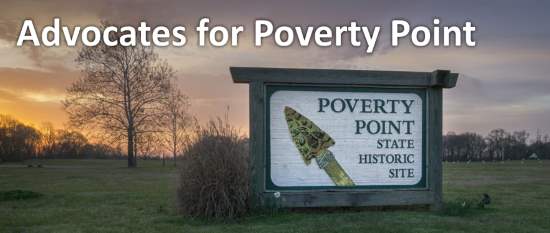
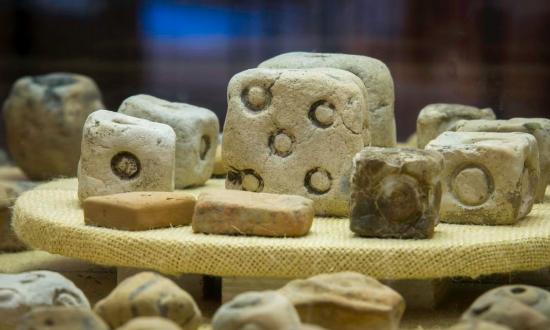
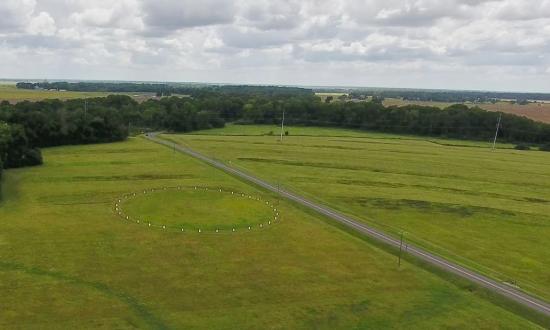
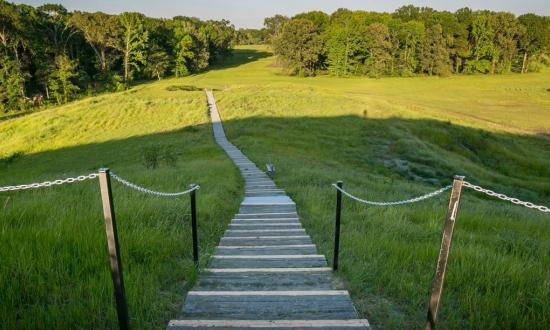
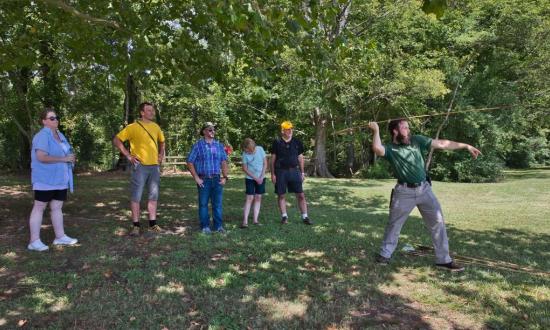
Features
Tours
- Historic and/or Nature Programs
- Guided tram tours are offered four times daily (offered Wednesday through Sunday)
- Regular schedule for tram tours: 10:00 a.m., 11:30 a.m., 1:00 p.m., 3:00 p.m.
Hiking
- Hiking Trails - 2.6 mile Hiking Trail
- Picnic Areas
Birding
Birding - A Birder's Guide to Louisiana gives directions to over 100 areas for birding throughout the state, includes maps, Louisiana specialties, and contains beautiful photography and checklists of Louisiana birds and other wildlife. The Guide was produced through a partnership between the Atchafalaya National Heritage Area and the American Birding Association.
please call the site before your visit to verify the above items are available on the day of your visit